SITREP - Happy Spring!
Children actually grow faster in the spring than during other times of the year.
Hey friends! Long time no SITREP. I promise I didn’t forget you all. I was busy with work and meeting up with some of my book friends from around the world!
Last weekend, I met several friends in NYC for book shopping, museums, and lots of good food. It was a particularly exciting visit because I finally met two friends from the UK. It’s lovely to spend time with like-minded people, strolling the city and stopping at every McNally Jackson store we pass. Alfie shows off my book haul at the end of this newsletter if you want to see what I came home with from our Big Apple Adventure.
I have read several books in the last two weeks and can’t wait to share them with you. Full disclosure: I’m also experiencing a wicked back spasm as I write this, and I’m hoping I can coherently talk about them. Please forgive me for being a bit brief with my reviews this week. As always, I’m happy to expand on any of the books mentioned in a video review.
I’m a BookShop.org affiliate! Full disclosure: I will receive a small commission if you order books using my links,
Book Things:
Currently Reading:
The Last September by Elizabeth Bowen:
The Last September is set in 1920s Ireland during the Irish War of Independence. The story takes place at a large Anglo-Irish house in County Cork owned by Sir Richard and Lady Naylor. The Naylors have a young niece, Lois Farquar, living with them. The novel captures the tensions in Ireland during this period, but it’s also meant to be a coming-of-age story. So far, I enjoy writing about and learning about this period in Anglo-Irish history. I’m curious to see how the story will unfold. I know at least one of you is also reading this, and I’d love to hear your thoughts so far. (20%)
Genius and Ink: Virginia Woolf on How to Read by Virginia Woolf:
This collection of essays showcases Woolf's remarkable insights into the art of reading and literary criticism. Originally published as reviews and articles in various publications. You can find many of these essays in The Common Reader.1 Genius and Ink offers Woolf's perspectives on approaching reading and engaging with texts actively and thoughtfully. She discusses various aspects of literary appreciation, from the technical elements of writing to the broader cultural context in which literature exists. There are essays on Jane Eyre, George Eliot, and Henry James, to name a few. I’m enjoying dipping in and out of this collection. (22%)
The Magic Mountain by Thomas Mann (Translated by John E. Woods):
I continue to chip away at this mammoth book. I’m determined to finish before the end of the month. Please send encouragement. (63%)
The Custom of the Country by Edith Wharton:2
I’m still working on our first post for The Custom of The Country read-along. I got a bit behind, but I will catch up with you this week. Be sure to follow along with My Year with Edith Wharton here so you don’t miss a post.
Recently Finished:
First Love: Essays on Friendship by Lily Dancyger:
“The idea that the very things that have made you feel different and wrong are not only impressive and romantic, but they can connect you with someone else, is intoxicating. Irresistible. It feels like acceptance and absolution, like being fully seen and loved for exactly who you are.”
First Love is one of a handful of books I picked up on my trip to NYC last weekend. This is a collection of essays about female friendships, but it’s more than that. It’s a memoir of Dancyger’s life through these friendships. The essays delve into various aspects of friendship, from childhood bonds to adult relationships, highlighting both the intensity and fragility of these connections. Dancyger captures the nuanced emotions and unspoken dynamics between friends, and I found myself looking back on the female friendships that have shaped my life. I originally intended to read this slowly over the course of the week, but we had a power outage, and I had nothing but time to kill. Once I started, I found I couldn’t stop. I highly recommend it.
A Tale of Two Cities by Charles Dickens:
“There is prodigious strength in sorrow and despair.”
I randomly pulled A Tale of Two Cities to read and vlog as a viewer’s choice.3 Other than A Christmas Carol, I haven’t enjoyed reading Dickens. I was very nervous about reading this and had flashbacks of suffering through Great Expectations in high school. I will save my full thoughts and reactions for the vlog, but I don’t think I hate this. I still find Dickens’ writing a bit tedious and self-indulgent at times. And the plot of A Tale of Two Cities was often difficult for me to follow. But, when Dicky stepped into his stride and started throwing out twists and turns at the end of the book, I was riveted. Maybe I won’t write him off entirely. Perhaps I’ll even attempt Bleak House for Victober. Does anyone want to join me?
Frankenstein in Baghdad by Ahmed Saadawi (translated by Jonathan Wright):
“Anyone who puts on a crown, even if only as an experiment, will end up looking for a kingdom.”
Frankenstein in Baghdad reimagines Mary Shelley's classic tale in war-torn Baghdad. Set in the aftermath of the US invasion of Iraq, the story follows Hadi, a junk dealer who begins collecting body parts from bombing victims and stitching them together. He wants to create a complete corpse that can receive a proper burial, giving dignity to those whose bodies were scattered in explosions. But one day, the body disappears. Before long, this "Whatsitsname," as it becomes known, starts hunting down anyone responsible for the deaths of the people whose body parts make him up. Initially targeting only those directly responsible for killing the people who make up his parts, the creature's mission becomes increasingly complex and morally ambiguous. With each avenging murder, a part of his body decays and falls off. The Whatsitsname finds himself shifting from murdering in the name of justice to murdering to maintain his decomposing body by replacing parts with new victims.
I loved how this novel examines justice, power, good vs. evil, and revenge, as well as the human cost of endless conflict and the tragedies of war. Frankenstein in Bagdad was brilliant, and I highly recommend it.
“It is easier, of course, to find dignity in one’s solitude. Loneliness is solitude with a problem.”
I don’t know why I was so drawn to Bluets. I’ve never read anything from Maggie Nelson before, so I had no idea what to expect. I’m assuming I picked this up because someone mentioned loving it. I stuck it on my Libby hold pile before forgetting all about it. When it became available to read this past week, I thought, why not? How bad could it be?
Well, it wasn’t bad, but I didn’t fall in love with it either. This is a hybrid work of autobiography, philosophy, and cultural criticism, where Maggie Nelson presents 240 prose fragments centered around the color blue. I loved The White Book by Han Kang, so there was a chance I’d love this too. Unfortunately, these ruminations on color didn’t grab me like Han Kang’s ruminations on the color white did. Some of the fragments were beautiful and compelling, but it was just fine as a collection. Is there something better I should try from Maggie Nelson?
“The group was not afraid of being radical either; they could see the good Roosevelt was doing, despite what Mother and Dad said; they were not taken in by party labels and thought the Democrats should be given a chance to show what they had up their sleeve.”
I was so close to DNF-ing The Group, and then I had a long conversation with my friend Kit while we waited for the subway, and I decided to keep going. I’m glad I did. The Group is far from a new favorite, but I enjoyed what Mary McCarthy was doing with the story and loved the bond between these women. I talked about The Group in my recent video on midcentury women writers if you want to hear more of my thoughts.
Through these women, McCarthy explores the changing roles of women in society - particularly around careers and financial independence. She also looks at sexual politics (including sexuality), contraception, class consciousness in depression-era America, and tension between traditional values and modern attitudes (especially regarding childrearing). Unfortunately, the writing can feel clunky, and the pacing is inconsistent, which sometimes makes this a frustrating read. I’m very glad I powered through, but I’m unsure if I can recommend this broadly. If you’ve ever wanted to read The Group, I say give it a try, but beware, there is a lot of outdated language that may be hard to read.
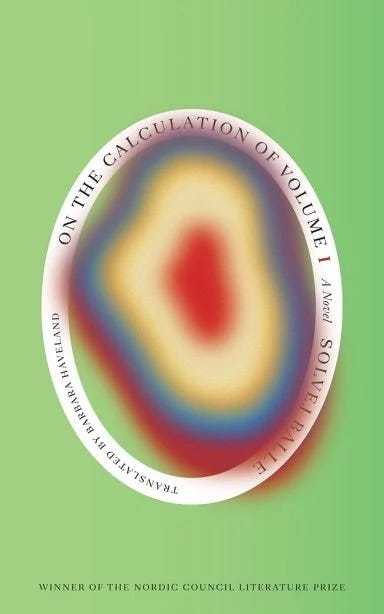
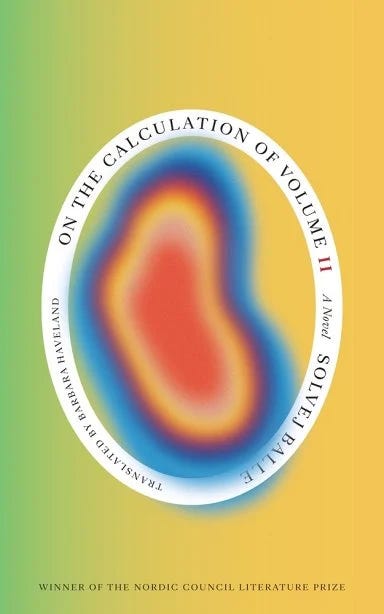
On the Calculation of Volume (Book I & Book 2) by Solvej Balle (translated by Barbara J. Haveland):
“Recalling the way I felt last night, that sense of change and hope, and then my dismay at the rude reversion to the same lopsided moon, I cannot help but feel that the world’s been pulling my leg. That not only was I mistaken, but that I had fallen for an April Fool’s prank. As if the moon had altered its appearance just long enough for me to imagine that there really was a difference, only then to act all innocent just hanging there in the sky, totally deadpan.”
PLEASE READ THESE BOOKS!!
My friend Yahaira added these to my pile, and I grumbled because I wasn’t looking to buy that many books. But she swore I’d love them. On the train home, I decided to crack open the first book to see what all the fuss was about, and I was hooked. Book I of this septology is currently longlisted for International Booker, and after reading this series, I’m intrigued to read some of the other books on the longlist. I wonder if there are new favorites to be found there.
Essentially, this is a time-loop narrative - think Groundhog Day, but make it literary. Our protagonist, Tara, wakes up each morning to find it's November 18, 2016, creating a looping narrative that challenges our understanding of temporal experience. We follow Tara as she navigates this endless repetition, documenting her observations, calculations, and attempts to make sense of her situation. Each iteration of the day reveals new details and perspectives, which she meticulously records in her diary. Book 2 continues the loop but ends on a cliffhanger that has me itching for the next two books in the series, which won’t be out until November!
Balle’s writing is precise and analytical but slowly morphs into more lyrical, almost poetic prose as Tara becomes more emotionally distraught over being stuck in this infinite loop. This series is brilliant, and I’m pissed I can’t binge the whole thing in one weekend.
By Grand Central Station I Sat Down and Wept by Elizabeth Smart:
“What is going to happen? Nothing. For everything has happened. All time is now, and time can do no better. Nothing can ever be more now than now, and before this nothing was. There are no minor facts in life, there is only the one tremendous one.”
I said I’d let this simmer, and I’m glad I did because I really enjoyed By Grand Central Station I Sat Down and Wept. This is another book that I feel I can’t recommend to everyone because there are a lot of people who are going to find Smart’s style pretentious. You'll hate this book if you don’t like heavily poetic prose dripping in emotion. Smart's writing style is notably baroque and intense, employing biblical references, literary allusions, and poetic devices, which can be a turn-off for some readers. Thankfully, I love it. The story is so sad. It screams to be told in this indulgent, emotional style. After reading this, I need to try Smart’s poetry to see how I can get on with it. If any of you have read her poetry, can you leave a comment with your thoughts?
Just in from publishers:
(Thank you to all the publishers who sent me books for spotlight and review. I will never get over how bonkers it is that this happens.)
Everything is Tuberculosis: The History and Persistence of Our Deadliest Infection by John Green (Out now from Crash Course Books):
“In 2019, author John Green met Henry Reider, a young tuberculosis patient at Lakka Government Hospital in Sierra Leone. John became fast friends with Henry, a boy with spindly legs and a big, goofy smile. In Everything Is Tuberculosis, John tells Henry’s story, woven through with the scientific and social histories of how tuberculosis has shaped our world—and how our choices will shape the future of tuberculosis.”
TB is seen as a disease of the past. It’s something many in the Western world never have to worry about. But it remains the number one killer globally. It’s treatable and preventable but continues to spread because of a lack of awareness and healthcare inequities. Tuberculosis is a fascinating disease from a microbiology perspective and, more importantly, a social perspective. I’m so excited to read this.
Wild for Austen: A Rebellious, Subversive, and Untamed Jane by Devoney Looser (Out September 2, 2025, from St. Martin’s Press):
I’m really hoping this isn’t another Darcy Myth experience. Wild of Austen examines Jane Austen’s life and work and traces her legacy's fascinating and fantastical journey over the past 250 years. Either this will be a fun time, or I will need to buy a bottle of wine to get through my rant review.
The Graceview Patient by Caitlin Starling (Out October 14, 2025, from St. Marton’s Press):
“Misery meets Invasion of the Body Snatchers in this genre-bending, claustrophobic hospital gothic.” Honestly, that’s all I needed to read. Margaret lives with a rare autoimmune condition that has no cure, but she’s making do as best she can—until she’s offered a fully paid-for spot in an experimental medical trial at Graceview Memorial. Unfortunately, the trial will kill most of, but not all, of her. Unsure of what's real and what is just medication-induced delusion, Margaret struggles to find a way out as her body and mind succumb further to the darkness lurking throughout Graceview's halls. I love a good gothic novel, and I hope this delivers.
3, 2, 1, Round-up:
(AKA Random Non-Bookish Things Because I Totally Have Other Interests)
Three Films I’m Watching:
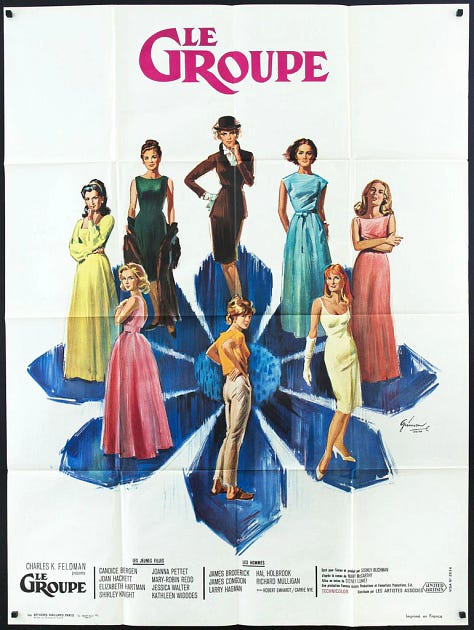

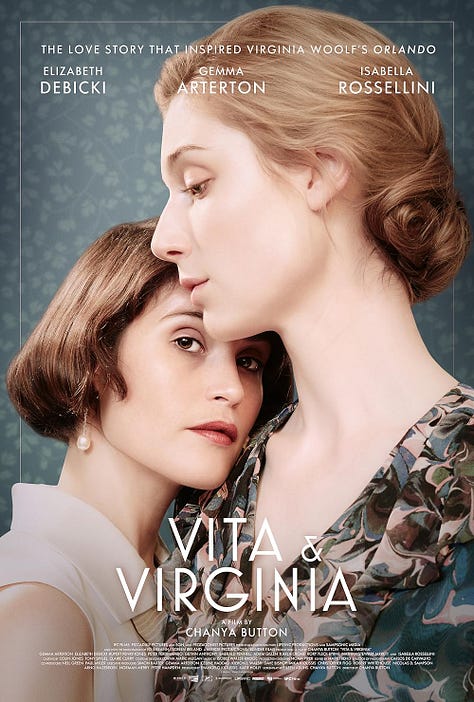
Recently Finished: The Group (1966)—I heard about Mary McCarthy's dislike of the film adaptation, and I had to see how good or bad it could be. I didn’t hate the film, but I do question the hair. The story is set in the 1930s, and Kay has 1960s hairstyles throughout the film. I hated it so much. It distracted me more than it really should have. The acting was great, and I enjoyed seeing the story come to life. I think the movie is more palatable than the book.
Currently Watching: Rosencrantz & Guildenstern Are Dead (1990)—I can’t believe this is my first time watching this bonkers film. Gary Oldman and Tim Roth are perfect together. I’m watching chunks between sitting up to type. It’s slow going, but I’m enjoying myself. The banter is top-notch and the story is the perfect amount of wacky. There’s one positive to these spasms, and that’s having time for good films.
Up Next: Vita & Virginia (2018)—I’ve had this on my watchlist for a while now, and I think it’s time to start it (well after I finish with Gary and Tim). Set in 1920s London, the film chronicles the complex romantic and intellectual connection between writers Virginia Woolf (Elizabeth Debicki) and Vita Sackville-West (Gemma Arterton). I must read Virginia Woolf and Vita Sackville-West: Love Letters when I'm done watching this.
Two Videos to Watch:
Madame Restell was a truly fascinating woman. I loved this lecture from the American Antiquarian Society. Jennifer Wright published an excellent book about Madame Restell a couple of years ago. If you want more on this infamous abortionist, I highly encourage you to read it after watching this lecture.
I finally watched this documentary about Leonora Carrington and loved it! I love her paintings and writing, but I’m most intrigued by her remarkable life. I need to prioritize her memoir. Too many books, so little time.
One Adorable Picture of the pups:
SITREP is a free weekly newsletter about books and things. If you want to support my work, consider becoming a free or paid subscriber. You can also simply like and share this post with your friends.
Thank you for reading. See you next week!
I need to cross-check the indexes of both books to see if this is really a reprinting of The Common Reader with new introductions.
Technically, I finished this one, but you’ll have to wait for all my thoughts!
You may recall I did this in February with Call Me By Your Name.



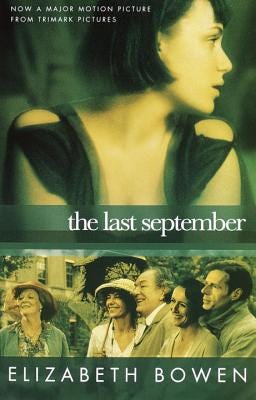













One of the characters in Virginia Woolf's novel, "Jacob's Room", comments: "I enjoy the spring more than the autumn now. One does, I think, as one gets older." I'm pleased to report that, as much as I enjoy spring, I still prefer the fall season, mainly because of its higher 'Coziness Factor'.
I, too, studied "A Tale of Two Cities" and "Great Expectations" in high school, but haven't been inclined to reread either of them since, though I have enjoyed other Dickens novels in recent years. Your mention of "A Tale of Two Cities" reminded me that I haven't watched the 1935 film version for quite some time, so I dug out my DVD copy and watched it the other day. I had forgotten how good the film was. The crowd scenes such as the storming of the Bastille, the trials before the Revolutionary tribunal, and the execution site in the Place de la Revolution are impressive even by today's standards, and Ronald Colman gives one of his best performances as Sydney Carton, the lonely, alcoholic, world-weary lawyer who finds meaning in life through his devotion to Lucie Manette and her family. The theatrical nature of screen acting during the Golden Age of Hollywood is exactly suited to Dickens' characters.